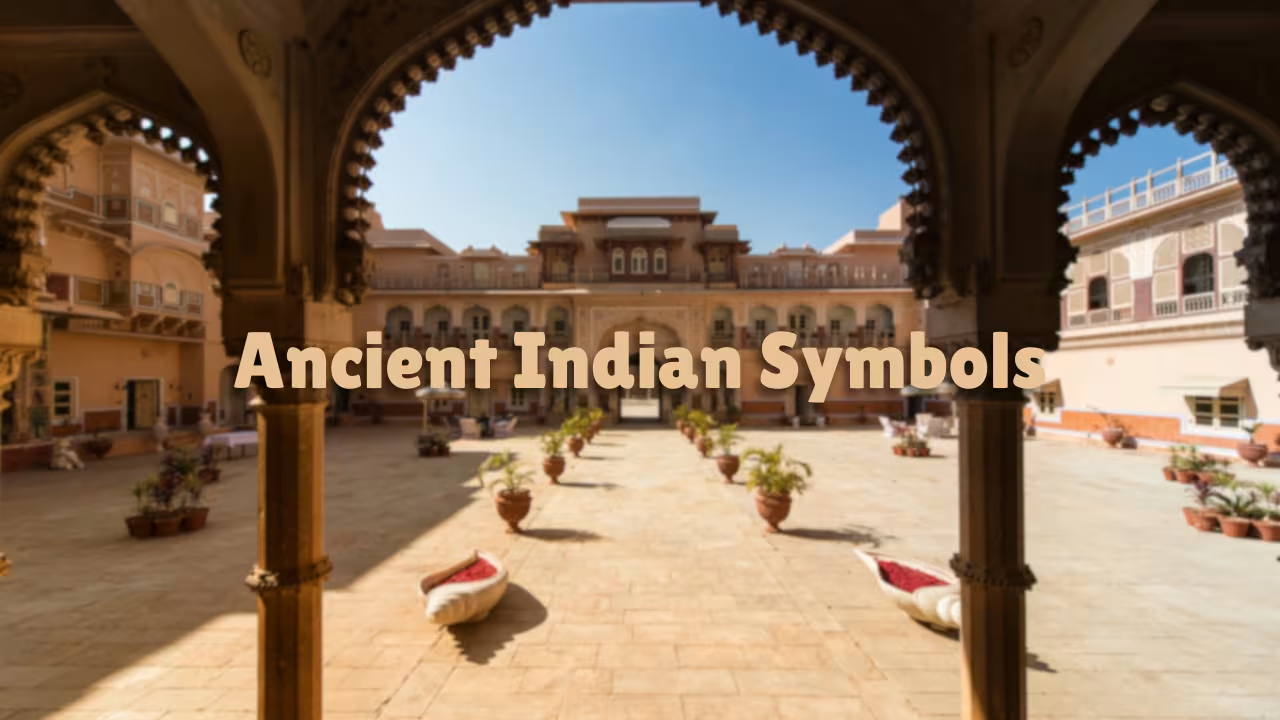Look at the symbols we use daily today – Copyright ©, Trademark ™, Star ★, Music Note ♫… It would be surprising to know that even behind many such symbols there is the influence of ancient Indian symbols.
Those symbols that are still alive today – "Om (ॐ), Swastika (卐), Lotus, Trishula, Nataraja, Ashoka Chakra", etc.
Origin of Indian symbols
Indian symbols originated from Vedic philosophies, mythological stories, Indus Valley Civilization, etc. "Om, Swastika, Lotus, Trishula" are not just decorations – they represent spirituality, cosmic order, and cultural identity.
They have been alive for thousands of years through temple sculptures, symbols, and festival customs.
Meaning of important symbols
ॐ (Om):
Considered to be the first sound of the universe, Om represents creation, unity, and spiritual vibration. Om is often chanted in meditation, yoga, and mantra chanting.
卐 (Swastika):
An eternal symbol that represents good fortune, prosperity, and protection. Drawn in the direction of the sun's rotation, this symbol is still often seen in homes, festivals, and pujas.
Lotus:
The lotus, which blooms in dirty water but appears pure, is a symbol of purity, wisdom, and spiritual growth. The lotus is influenced by temple sculptures, paintings, and even today, corporate logos.
Trident (Tridhandam):
The trident associated with Lord Shiva represents the three powers - creation, preservation, and destruction. At the same time, it is also seen as a symbol of control, strength, and balance.
Nataraja:
Lord Shiva, who dances the cosmic dance, depicts the cosmic order in which both creation and destruction occur simultaneously.
Ashoka Chakra:
Derived from the Buddhist Dharma Wheel. It represents law, movement, and progress. Today, it proudly sits in the middle of our national flag.
Impact in the modern world
Even today, ancient Indian are alive in many forms. Artists, designers, and designers – no one can avoid these symbols. From digital paintings to clothing designs, "Om, lotus, and trident" are often seen.
We see this in today's daily life too –
- The "Om" symbol is not only used in meditation, but also in jewelry, tattoos, home goods, and music brands.
- The lotus is still a symbol of purity in logos, architecture, and designs.
- The Ashoka Chakra is a national symbol that represents national unity.
- The swastika is still drawn in homes, during pujas, and festivals as a symbol of prosperity.
Globally, sometimes it is approached with respect, sometimes it is used as a mere style or fashion. That is why debates arise. But one thing is undeniable – these symbols still have life; they go beyond the surface and give deeper meanings.
Why are these symbols still important?
Ancient Indian symbols, deeply rooted in ancient Indian history, are a bridge that connects spirituality and economic life. That is their eternal strength.
They connect us to our roots, traditions, and values.
The peaceful vibration of the Om symbol, the guiding power of the Ashoka Chakra, the purity of the lotus – all these keep us grounded even in today's fast-paced world.
